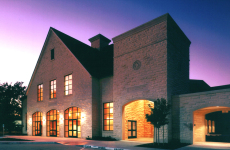Three things are certain in life: death, taxes, and rapidly increasing tuition costs –or at least that’s probably how many college students and their parents feel. According to long-term data gathered by the College Board Annual Survey of Colleges and the National Center of Education Statistics (NCES), college tuition costs have been increasing faster than inflation for the last three decades.
The groups’ latest compilation of data shows a particularly notable divergence over the last decade between the increases in tuitions at private non-profit colleges and universities on one hand, and their public counterparts on the other. Between 2002 and 2013, tuition costs at four-year public schools soared by an average of 5.2 percentage points above the rate of the Consumer Price Index (a standard measure of inflation), while their private counterparts only rang up relatively small increases of 2.4 percentage points above inflation. Public community colleges also suffered increases higher than private schools, checking in with average annual increases of 3.8 percentage points above inflation.
What’s causing the differential hikes between public and private schools? The difference is especially puzzling, as both sets of schools raised prices at nearly identical rates between 1982 and 2003. One potential source of the dichotomy is differences in funding: Private schools are funded primarily by tuition, while public schools receive aid from state governments. A decrease in government aid wouldn’t influence private schools, but would open deficits at state schools that would force cuts or tuition hikes. Here, I analyze several examples of public university finances that suggests that these budget cuts are playing a large role (though perhaps not the sole role) in increasing tuitions.
Before getting into some specific examples, however, it’s important to note the idea of state-subsidized higher education has a long history in the United States and has helped tens of millions of middle- and working- class citizens get an education.
The idea of state institutions of higher education dates back to the early 19th century, but gathered momentum in 1862 with the passage of the Morrill Act. Approved during the Civil War after southern states blocking its passage seceded, the law provided massive grants of federally owned land to states on the condition that they used profits from the land’s sale to endow universities opened to train members of the public specifically in agricultural sciences, engineering and military tactics (ROTC programs), while also providing broad exposure to the liberal arts.
Later extensions of the act expanded the program by giving cash grants to former Confederate States and new western states. States needed to provide that African Americans received equal access to education, either through admitting blacks or creating a separate institution for African Americans. Most southern states, including Texas, took the latter route, which reinforced segregation policies, but also creating many of the public traditional African-American universities. In Texas, our two land grant schools are Texas A &M University and traditionally African-American Prairie View A&M University.
The legacy of the Morrill Act is wide indeed: Nine of 12 of the schools in the Big 10 are land-grant colleges, including highly ranked national schools like the University of Illinois and the University of Wisconsin. Noted academic powerhouse of the University California Berkeley, which was the original campus of the world-class University California system, is also a land grant school.
The ideals fostered by the Morrill Act crested in the mid to late 20th century with the idea of opening college for all. The idea was that anyone with a high-school education who wanted to better themselves could attend a two-year community college. Higher ranked students could then make their way into the flagship state schools. Since having an educated, technically skilled society was an investment, state governments heavily subsidized both community colleges and four-year public universities, perhaps idealized in the California’s three-tiered vision of community colleges, Cal-State system and the University of California system.
But it wasn’t just California – most other states embraced the idea of affordable college for the masses as well. In the 1960s, for example, tuition at the University of Texas-Austin, Texas’ traditional flagship public school, made up roughly 15 percent of the revenues during the 1960s, while state subsidies made up almost all of the rest. The story was similar at the University of Michigan Ann Arbor, where state aid provided 80 percent of costs. At UM tuition cost $250 a year in 1960 – $1,975 in 2013 dollars. Costs were similar at other flagship public universities.
Since those days, two things have happened at public universities. First, state aid has gone down. Second, tuitions have gone up. Take figure 1, which shows the percentage of Michigan State University – one of the original land grant schools – general fund revenues that come from state aid and from tuition between the 1987 and 2013 academic years. (The general fund does not include revenue from sports, research grants, or university-affiliated health care systems).
State aid dropped from 62 percent of MSU’s revenues to 22 percent, while tuition increased from roughly 31 percent to nearly 70 percent. Notice how most of the increase in tuition share and decrease in state share has occurred since 2001. MSU’s in-state tuition more than doubled during that time, from $5,500 to $12,200. The story is the same at MSU’s cross-state rival, Michigan. There, state aid dropped from 36 percent of the university’s general fund revenues in 2001 to 17 percent in 2013, while tuition zoomed from 54 percent to 72 percent of revenue. In-state tuition during that time? It jumped by 90 percent, increasing from $6,900 to $13,100.
State aid declined not only as a share of the budget, but also in dollar amounts. At MSU, state aid decreased from a high of $326 million in 2002 to $245 million in 2013, while at UM funding public funds declined from $416 million to $321 million. Adjusting for inflation makes those drops more dramatic.
UT-Austin has showed similar trends. In 2006 (the earliest year for which I could easily find data), state aid made up 31 percent of the school’s academic core revenues, while in the 2012-2013 school year, it’s about 24 percent. In-state tuition has correspondingly increased from $6,600 to $9,346 (while out-of state tuition has climbed even faster) and has increased to about half of revenues. State aid has nominally increased from $302 million to $316 million, but adjusting for inflation means that UT-Austin has taken a $33 million cut. Figure 2 shows inflation-adjusted declines in state funding at all three schools.
The withdrawal of state aid doesn’t explain all of the rapidly increasing prices of a university education; remember that even private-school tuition is increasing at a faster pace than inflation. However, the drastic cuts of public funding for public schools have exacerbated affordability issues. Public school administrators seek to maintain academic facilities by offloading the cost of state cuts onto parents and students through tuition increases, which has steadily been eroding the affordability of obtaining a college degree for American middle and working-class students.
________________
About the author:
Patrick O’Mahen earned his PhD. in political science from the University of Michigan in 2013. During his time in Ann Arbor, he served as Communications Chair of the Graduate Employees’ Organization, the labor union that represents 1,800 Graduate Student Instructors on campus. He is also a former editor of the Wayne County Mail, a weekly newspaper in Upstate New York, where he covered local government and education. At the Mail, he won the 2002 New York Press Association awards for best education coverage and best columnist. He has published Op-eds in Ann Arbor.com, the Detroit Free Press, and the Monkey Cage, which is a national political science blog currently affiliated with the Washington Post.
Dr. Patrick O’Mahen can also be followed at his blog and on Twitter.


















Pingback: Three ways to make saving up for college easier